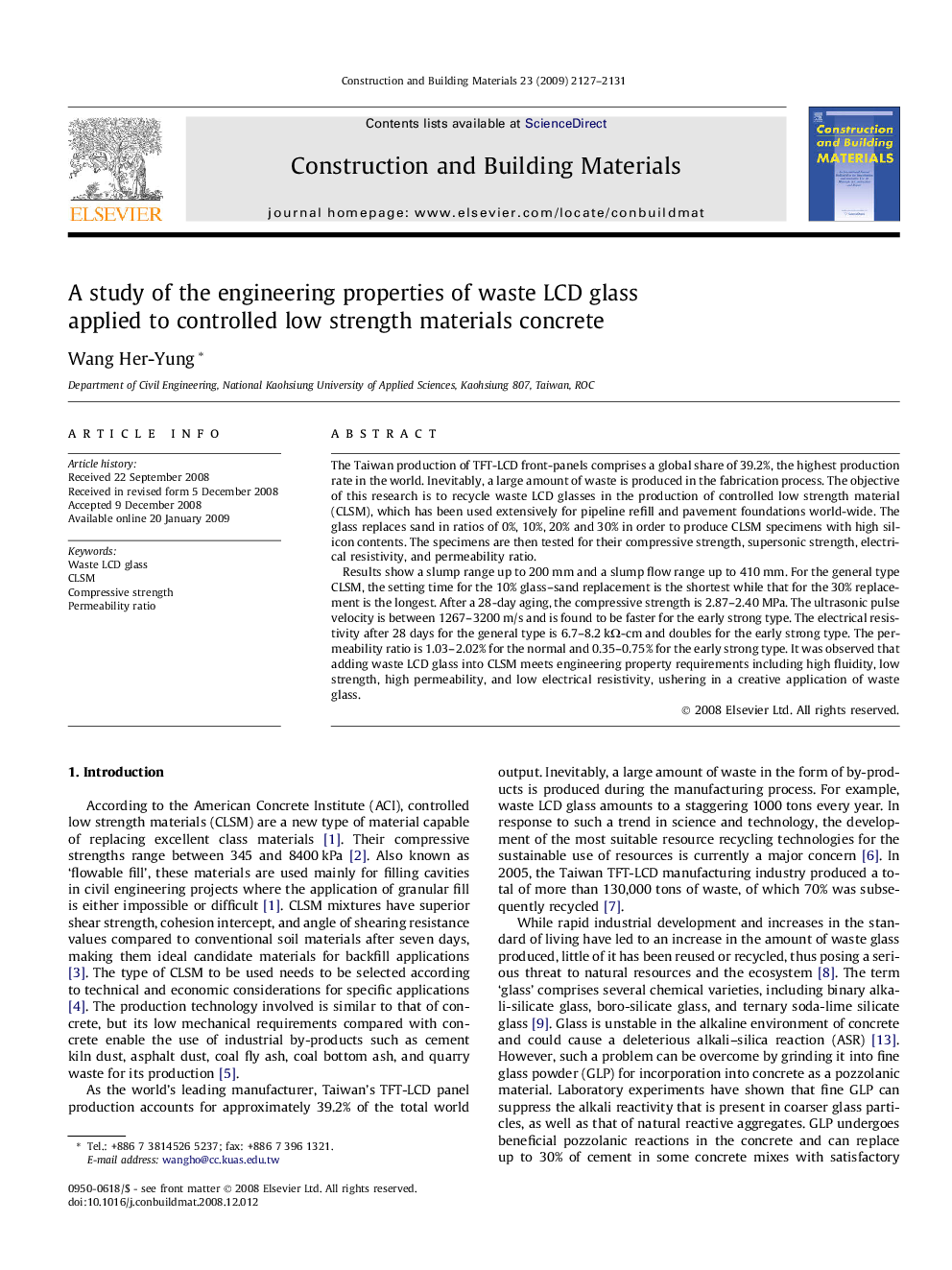| Article ID | Journal | Published Year | Pages | File Type |
|---|---|---|---|---|
| 260317 | Construction and Building Materials | 2009 | 5 Pages |
The Taiwan production of TFT-LCD front-panels comprises a global share of 39.2%, the highest production rate in the world. Inevitably, a large amount of waste is produced in the fabrication process. The objective of this research is to recycle waste LCD glasses in the production of controlled low strength material (CLSM), which has been used extensively for pipeline refill and pavement foundations world-wide. The glass replaces sand in ratios of 0%, 10%, 20% and 30% in order to produce CLSM specimens with high silicon contents. The specimens are then tested for their compressive strength, supersonic strength, electrical resistivity, and permeability ratio.Results show a slump range up to 200 mm and a slump flow range up to 410 mm. For the general type CLSM, the setting time for the 10% glass–sand replacement is the shortest while that for the 30% replacement is the longest. After a 28-day aging, the compressive strength is 2.87–2.40 MPa. The ultrasonic pulse velocity is between 1267–3200 m/s and is found to be faster for the early strong type. The electrical resistivity after 28 days for the general type is 6.7–8.2 kΩ-cm and doubles for the early strong type. The permeability ratio is 1.03–2.02% for the normal and 0.35–0.75% for the early strong type. It was observed that adding waste LCD glass into CLSM meets engineering property requirements including high fluidity, low strength, high permeability, and low electrical resistivity, ushering in a creative application of waste glass.
